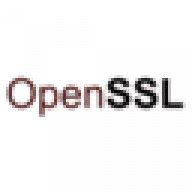OpenSSL for Mac
Cryptography library and toolkit to work with the TLS and SSL protocols.

Cryptography library and toolkit to work with the TLS and SSL protocols.
OpenSSL provides support for the TLS and SSL protocols and also includes various tools used in cryptography. Note that OpenSSL is officially available only as source, so you must manually compile and install the software on your Mac.
To install the OpenSSL toolkit and library on your Mac, you must open the Terminal application, go to the OpenSSL source folder, and follow the instructions from the INSTALL file included in the archive.
For short, you must run the "./config", "make", "make test", and "make install" commands, and then type openssl in the Terminal. If you need to see what OpenSSL release you are using, you can use the "version" argument.
Note that you must make sure you are using the correct PATH to reach the latest OpenSSL installation. When you install OpenSSL, you get to see the output location, and you can check the path used by default with the "which openssl" shell command.
Older OpenSSL versions are delivered with the system by default, and the old link will most likely be preserved. This means that you must configure the shell to use the correct path on your own.
Worth mentioning is that you can also install the toolkit using a package management solution such as Homebrew.
While in OpenSSL's command line interface, you get to see all the standard, message digest, or cipher commands supported by OpenSSL, but you do not get usage instructions.
Make sure to check the online documentation to read extensive descriptions and learn about configuration options for each of the included commands.
OpenSSL's developers also provide a Frequently Asked Questions section where you can get details about the latest version, about how you can use the commands, and so on.
To conclude, the OpenSSL software package offers you the possibility to work with the SSL and TLS protocols or to access cryptography tools, as long as you are willing to work with the command line.
Full list of changes available here

Comments
User Ratings